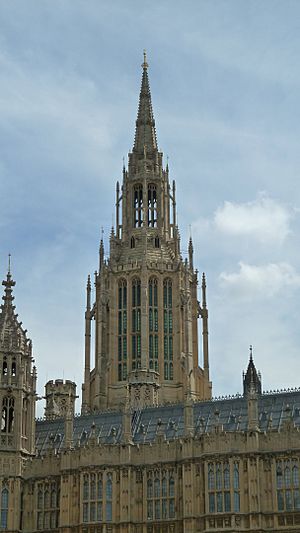Ventilation facts for kids

A ventilation system is a structure that controls airflow inside buildings. Its main function is to constantly supply fresh air, usually from the outside, while sending stale air back out. Fans and pumps, vent grates and air flow tunnels are common in these structures.
The simplest systems are called “natural ventilation,” which usually means that they get their airflow through vents opening to the outside. Mechanical systems are more popular for industry. Mechanical systems are able to regulate other things, including temperature, relative humidity, and oxygen levels.
Uses
Fresh air prevents issues like mold and bacteria growth, as well as the spread of disease. It helps eliminate dust, which can lead to cleaner living standards. Single rooms can sometimes be ventilated by opening a window or door, but this isn’t as successful for larger structures.
Ventilation usually collaborates with heating and cooling systems, but not always and they aren’t only limited to buildings. Vehicles frequently have ventilation systems that control air circulation and air quality.
History
In ancient Persia, structures called windcatchers were built to create natural ventilation. These structures are a traditional method in Persia. They became very popular and are still in use across the Middle East.
See also
 In Spanish: Ventilación para niños
In Spanish: Ventilación para niños



